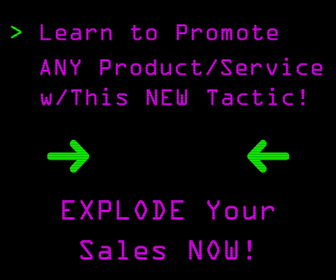 2018 is coming to a close, and it’s time to look to the future. Knowing about current and future trends will keep a business competitive and encourage a brand to interact more with their audience. Just like any trends, this is just a guess. No one can see into the future and know for sure what is going to take off the most, but based on what trends experts see today it’s a good indication these trends will continue to grow. Also, existing patterns may pave the way for other forms of social media that will become popular in 2019 and beyond. For now, it’s vital to stay with the times so you can use the right social media techniques to your advantage.
2018 is coming to a close, and it’s time to look to the future. Knowing about current and future trends will keep a business competitive and encourage a brand to interact more with their audience. Just like any trends, this is just a guess. No one can see into the future and know for sure what is going to take off the most, but based on what trends experts see today it’s a good indication these trends will continue to grow. Also, existing patterns may pave the way for other forms of social media that will become popular in 2019 and beyond. For now, it’s vital to stay with the times so you can use the right social media techniques to your advantage.
Live Streaming of Events
Companies are live streaming events such as new product launches and parties they attend to gain the attention of their loyal customers, and it works. Customers are more likely to purchase things from your company and feel engaged if you engage with them. MTA believes that by 2020 businesses will be using videos more than ever before to communicate with their customers.
Moreover, live streaming of events, ‘how-to' videos, product launches, behind the scenes, etc. is catching up with consumers and marketers alike. By 2020, videos will not only be used to create brand awareness and conversions but also become highly personal. Marketers will use videos for:
One to one communication – for e.g. Personalized videos to walk you through the features of a device.
Networking – As users consume more videos for entertainment and education, marketers will leverage this opportunity to build a community of loyal followers.
Visual content for online shopping – With short-form videos gaining traction, and shoppers preferring video ads and how to videos over other ad forms, marketers will sync social videos with their e-commerce strategy.
Social Report also mentions that live video will continue to grow and that also includes video ads. It’s pretty crazy to think that more than 80% of internet users watched more live videos than in 2017!
Like live video, traditional video will keep growing too. Studies expect video to account for a whopping 85% of total internet traffic by 2019. Further, 54% of internet users already watch video on a social media platform monthly, and that number will only grow over the coming years.
Video ads are on the rise too. 65% of ad impressions on Instagram were the result of video content, and we’re expecting that number to grow even further.
Marketers should consider adding video for their 2019 social media strategy. Some ways of doing this are by running video ads on YouTube and Instagram, creating video content in-house, or partnering with an influencer for paid product placement or endorsement in their videos.
Transparency About Social Media Privacy
In 2018 data privacy has become a big issue for companies like Facebook, for example. In the future, Smart Insights recommends companies being more transparent about their security and obtain an opt-in form from users. Smart Insights further discusses this issue below:
Data privacy, security and surveillance across social media has been a key issue of policy debate throughout 2018. In fact, social media has made it easier to generate, collect, and
store people’s data on a large scale. Earlier this year in March, news broke that a data-mining firm called Cambridge Analytica harvested personal data from around 87 million Facebook profiles, without the users’ consent, to build a system that would use micro-targeting and psychological profiling to target US voters with personalized political advertisements and influence the election results.
While the company shut down as a result of the debacle, Facebook and it’s CEO Mark Zuckerberg received a lot of flack, both by the users as well as legal authorities. This has also led to other social media networks, as well as brands, to focus on establishing transparent and honest communication with their audiences, at a time when they might be battling with a sentiment of privacy concerns. Marketers need to find more authentic and dialogical ways of communicating with their customers, instead of one-sided marketing communications revolving around collecting masses of user data without offering any valuable proposition to the consumers.Europe’s General Data Protection Regulation also came into effect on May 25 this year, revolutionizing the process of data protection online, giving users more control and authority over their personal data held by companies. If the Cambridge Analytica scandal had happened post-GDPR, Facebook’s fine could have gone up to €1.4 billion.
As a response to the breach of privacy fiasco by Facebook, the social media giant has come up with a number of measures to prevent such a thing from happening again in the future, promising more transparent methods of data collection, sponsored content and ad metrics in general.
Even though organic social media marketing remains largely unaffected by GDPR, paid social media marketing methods have and will continue to become more transparent. If you want to gather your customer’s behavioural data online, you will have to obtain an explicit opt-in consent from your customers.
Brands Taking Socially Conscious Stands
Though it may not be appropriate for every company to take a socially conscious stand, for some, supporting or creating an organization is an effective way for them both to promote their product and a campaign they believe in.
Brands taking a socially conscious stand. While this isn’t necessarily a new trend it is one that is resonating on social media. Brands are extending the life and reach of their campaigns by targeting socially conscious messages to receptive audiences on social media channels. Two of the best brand examples I can think of are Patagonia and Nike. Patagonia consistently broadcasts messages about social responsibility and targets paid adds to individuals that their message(s) might resonate with. Patagonia understands the value of reaching their audience on social and they’re leveraging a hunger in the market for corporate responsibility from brands. This strengthens customer loyalty and potentially leads to sales/retention. Nike took a page from Patagonia’s book and made a social statement by having Collin Kaepernick as their brand rep for their latest campaign. A large portion of their campaign leveraged social media (especially social users who the message would resonate with) in order to spread and elongate their campaign. The campaign generated an estimated $43 worth of media exposure within 24 hours, in no small part due to conversations/buzz generated on social media. I believe we’ll continue to see the trend of brands taking socially conscious stands and broadcasting that message using social channels.
More Chatbots
Medium says that chatbots are becoming very popular and will continue to grow and become more popular in the future. Customer service is needed, and chatbots make it easier for companies to improve their response rate on sites such as Facebook.
Chatbots are on the rise, taking over customer service for many brands. By 2020 85% of customer interactions are predicted to be dealt with by chatbots.
Not only are bots an effective way of mass communication, they also allow for a 24/7 two-way communication channel between your audience and the firm. Which on top of boosting customer satisfaction, will also boost your response rate on Facebook — improving SEO and the likelihood of your brand being recommended.
Some are hesitant of integrating chatbots into their customer service out of fear of poor user experience. But fear not, a recent survey revealed that 70% of consumers reported a positive experience and a further 9% were mutual about the experience.
On top of the aforementioned benefits, Facebook messenger has a Click Through Rate (CTR) of 80%. This has huge market potential.
Picture this, a brand with 1000 followers sends out an automated message linking recipients to a new product valued at $50.00. As per the average conversion rate for e-commerce sites after a user visits their landing page, 2–3% of the leads will convert to sales. Therefore of these 1000 followers 20 will purchase the product, leading to $1000 in revenue. Oh yeah, I forgot to mention — there are a lot of free Chatbot options (i.e. Snatchbot). $1000 revenue, from one message, without investing a cent on marketing.
Obviously this is a very simple projection as there are other factors to consider, but is not unrealistic.
Go find a chatbot you like and start using it. NOW!
Ads in Instagram Stories
Whether we like it or not, Social Media Explorer says that more ads in Instagram stories are going to turn up. It’s a great way for a growing business to get exposure, so it may be something you should think about adding to your ad campaign in the future.
Nearly half of all Instagram users engage with the new Instagram Stories feature on a daily basis. It’s the perfect alternative to the increasing prices of Facebook advertising, and you can still get the same targeted effect with your ads.
These ads don’t have to be complex. It could be as simple as adding a banner to a photo or shooting a 20-second video to announce new products. Later.com also warns that your content should fit in as naturally as possible with non-business Instagram Stories.
“Remember, when people are watching Instagram Stories they are used to seeing casual content from their friends instead of highly-produced videos, so if you don’t want people to swipe past your ‘ad,’ try testing organic, less filtered visuals,” she encourages.
Your Instagram strategy should be constantly evolving, hailing in a new year of greater followers and higher engagement on your page. This is the key to staying competitive on Instagram and in your business.
Sources: MTA Martech Advisor, Smart Insights, Business 2 Community, Social Report, Social Media Explorer
CHALLENGE Yourself to Profit!
Free Download: Build Your Profit-Generating Online Business With This Free Blueprint
Sign Up, follow the easy steps and You'll get the tactics, strategies & techniques needed to create your online profit stream. It's free!



